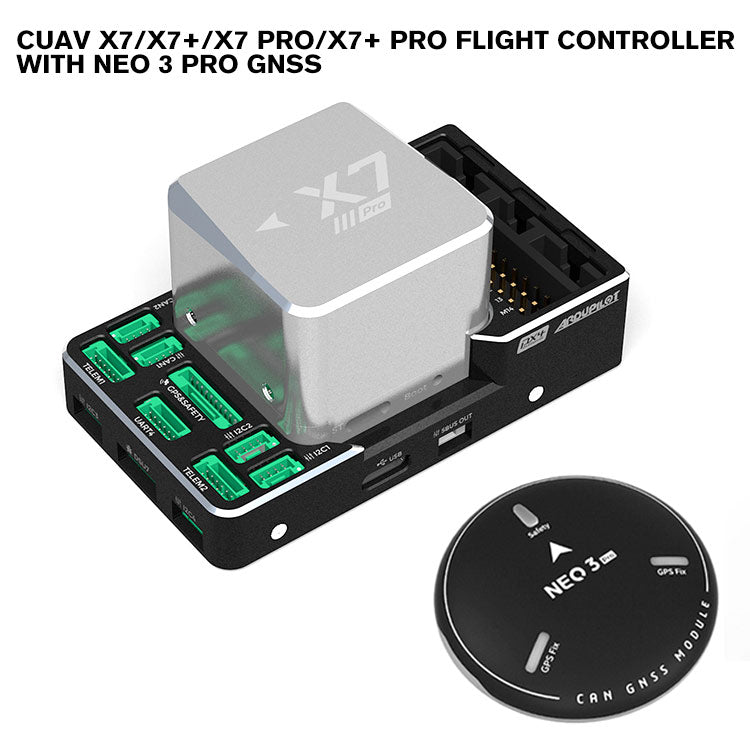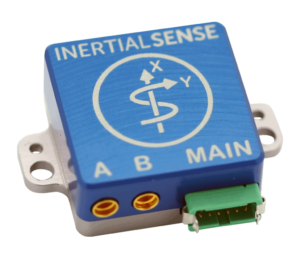SparkNavi Drone Flight Controller and GNSS/INS Made in Taiwan: Precision Navigation for Drones
The Importance of Drone Flight Controllers in Modern Aerial Technology: Trick Elements and Their Impact
In the realm of modern aerial technology, drone trip controllers function as the pivotal systems that coordinate a drone's performance and capabilities. These innovative devices incorporate crucial elements such as microcontrollers and GPS components, facilitating stability and accuracy in flight procedures. Their function is specifically pronounced in self-governing functions, where advanced formulas enhance navigating and obstacle avoidance. As markets progressively count on drones for applications varying from farming to security, the evolving technology within trip controllers increases crucial concerns concerning their future impact and potential innovations. What innovations exist in advance that could redefine our understanding of drone abilities?

Summary of Drone Flight Controllers
In the realm of airborne modern technology, drone trip controllers serve as the crucial brain of unmanned aerial lorries (UAVs), allowing exact maneuverability and security throughout trip. These innovative systems integrate sensor data, processing formulas, and control inputs, allowing drones to implement complex trip patterns with accuracy.
Drone flight controllers utilize different sensors, such as gyroscopes, accelerometers, and GPS modules, to analyze the UAV's alignment and setting in real-time. This details is essential for preserving equilibrium and making certain secure procedure in diverse ecological conditions. The controllers process this data to make immediate adjustments to the drone's electric motors, allowing for smooth transitions and receptive handling.
In addition, trip controllers are furnished with innovative software that supports features such as waypoint navigating, obstacle avoidance, and self-governing trip capacities. This software application is crucial for both entertainment and business applications, where reliability and accuracy are paramount. As drone innovation continues to advance, the advancement of flight controllers will certainly play a critical duty in improving UAV security, functionality, and adaptability, inevitably expanding their applications across numerous industries.
Secret Elements Explained
Recognizing the basic parts of drone flight controllers is important for comprehending how these systems operate properly. At the heart of a flight controller is the microcontroller, which functions as the mind, refining data from different sensors and implementing commands. Important sensing units include gyroscopes and accelerometers, which determine the drone's alignment and activity, offering vital comments for stabilization.
Another secret part is the measure, which assesses altitude by gauging climatic stress, while GPS components provide positional information, allowing self-governing navigation - SparkNavi drone flight controller and GNSS/INS made in taiwan. The trip controller additionally interfaces with Electronic Speed Controllers (ESCs), which manage the speed of the drone's motors based upon the controller's commands
Communication modules, such as radio receivers, promote remote input, enabling operators to send commands in real-time. In addition, some flight controllers integrate software application that can handle complicated formulas for waypoint navigation, trip preparation, and telemetry information evaluation.
Role in Trip Stability
Central to maintaining trip stability, drone trip controllers use innovative algorithms to refine sensing unit data and make real-time adjustments. These controllers are equipped with a range of sensing units, consisting of barometers, accelerometers, and gyroscopes, which constantly monitor the drone's rate, altitude, and orientation. By analyzing this data, the trip controller can determine deviations from the preferred flight path and respond quickly to keep security.
For instance, if a drone experiences an unexpected gust of wind, the flight controller can rapidly change the electric motor rates to neutralize the disturbance, ensuring a constant flight trajectory. This ability is vital not just for hands-on flight operations but also for carrying out complicated maneuvers and maintaining smooth flight in different ecological conditions.
.png)
Furthermore, the innovative formulas utilized in flight controllers, such as PID (Proportional-Integral-Derivative) control, permit fine-tuning of the drone's feedback to adjustments in trip problems. By optimizing these control parameters, flight controllers can improve stability, improve responsiveness, and decrease pilot workload. Eventually, the role of flight controllers in making sure trip security is vital for the secure and reliable procedure of modern-day drones throughout varied applications.
Effect on Autonomous Workflow

Autonomous operations are especially critical in varied applications such as security, farming, and delivery services. With boosted flight controllers, drones can autonomously browse fixed courses, efficiently gather information, go to my site and adjust to dynamic atmospheres. This capacity decreases the requirement for continuous human oversight, therefore raising functional efficiency and security.
Furthermore, the execution of artificial intelligence techniques within trip controllers allows drones to improve their performance in time by discovering from previous goals. This adaptability leads the way for much more innovative self-governing applications, such as flock innovation, where several drones collaborate their actions to achieve a typical goal.
Future Trends in Trip Controllers
Developments in trip controller modern technology are poised to revolutionize drone abilities in the coming years. One substantial fad is the combination of expert system (AI) and machine understanding algorithms, enabling drones to gain from their atmospheres and make real-time choices. This development will certainly boost self-governing navigating, challenge avoidance, and objective planning, dramatically enhancing functional performance and safety and security.
In addition, the growth of innovative sensor technologies, such as LiDAR and multispectral imaging, will supply flight controllers with richer information inputs. This will certainly facilitate much more advanced analytical abilities, enabling drones to perform complicated tasks, such as accuracy search, farming and rescue, and facilities evaluations with unmatched accuracy.
An additional emerging pattern is the miniaturization of trip controller parts, which will lead More hints to lighter and more small drones. This advancement will extend trip durations and haul abilities, making drones much more versatile for different applications.
Verdict
Finally, drone trip controllers function as important components in modern aerial modern technology, making sure stability and precision in ability to move via the combination of microcontrollers, accelerometers, and GPS modules. SparkNavi drone flight controller and GNSS/INS made in taiwan. Their capacity to allow self-governing procedures and adjust to various applications highlights their significance across several markets. As improvements in expert system and sensing unit technology proceed to arise, the capacity for enhanced capacities and boosted functional efficiency in drone index systems will likely reshape the future of aerial applications
Central to preserving flight security, drone flight controllers use sophisticated formulas to process sensing unit data and make real-time changes. By interpreting this information, the trip controller can identify deviations from the wanted trip course and react immediately to maintain security.
Additionally, the advanced formulas made use of in flight controllers, such as PID (Proportional-Integral-Derivative) control, allow for fine-tuning of the drone's response to modifications in trip problems. Inevitably, the role of trip controllers in making sure trip security is important for the efficient and risk-free operation of modern-day drones across diverse applications.
The improvements in drone flight controllers not only enhance trip security yet likewise significantly affect independent procedures. SparkNavi drone flight controller and GNSS/INS made in taiwan.